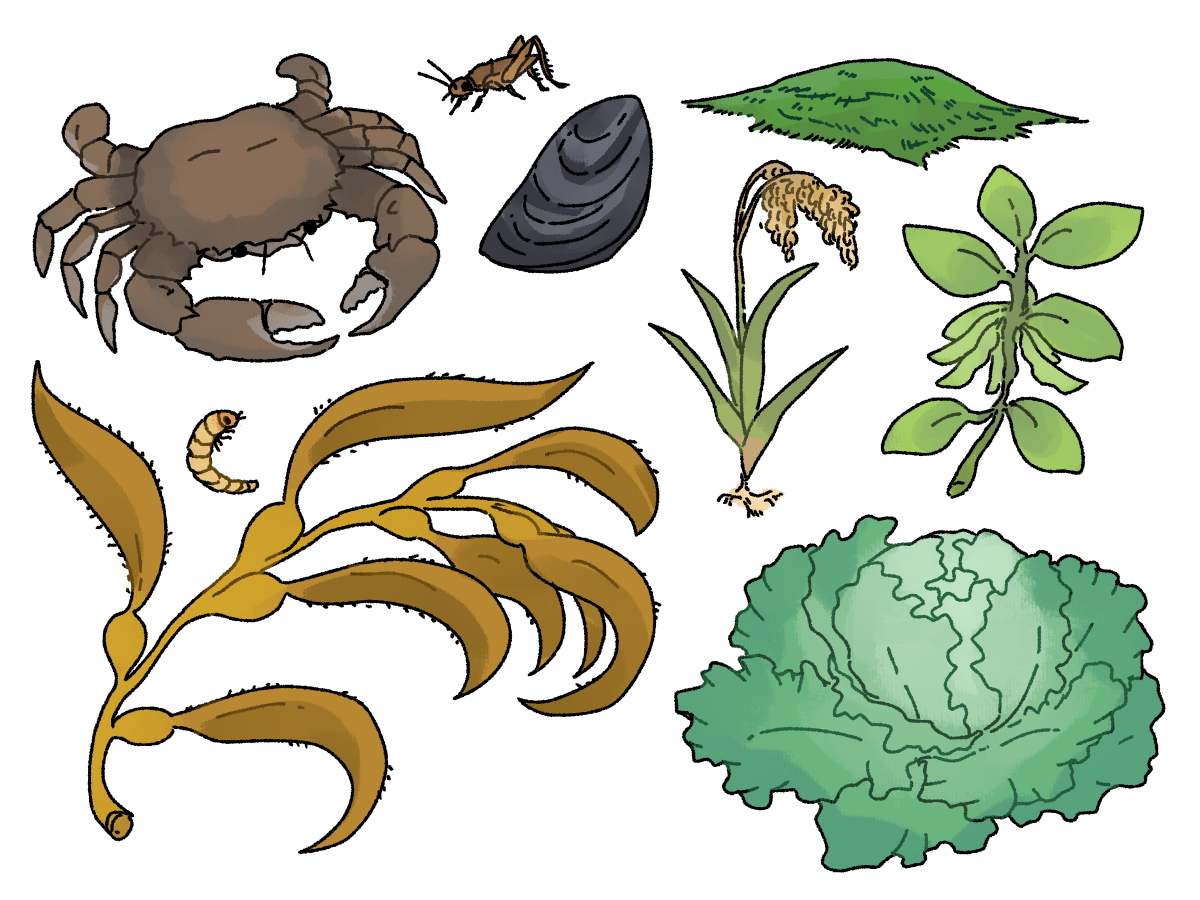Earthlings
still a WIP... a big one...
This page is dedicated to information about organisms native to Earth who've ended up on Confibula.
Various species
Overview
Humanity's brief stint of living on Confibula resulted in them leaving quite a few leftovers. Human farming operations included mostly shellfish and vegetables. Most of them are limited to areas where humans attempted to build colonies, but some have become widespread. Some of these "agricultural runaways" include Very Boring Crabs such as Mud, Blue or Snow Crabs, Mussels, Crickets, Mealworms & the beetles they turn into, spirulina, yeast, giant kelp, cabbages, kale, broccoli and any other vegetable derived from Brassica oleracea, grains such as rice or wheat, soybeans, and so on.
Over time, rewilded variants will probably arise from the domesticated vegetables allowed to run loose through Confibula.

The main thing to keep in mind about earthlings living on Confibula is that each organism was brought to the planet with a purpose. Pets weren't allowed to be brought, and all the plants, animals and microbes brought over were strictly for agricultural purposes.
Range
These organisms are typically found in the warmer regions of Confibula, due to it being a colder planet overall. Some cold-tolerant species such as the snow crab may be found further away from the equator.
The creatures and plants on Confibula tend to have different molecules governing their bodily functions, and as a result most of the native organisms would be indigestible at best and poisonous at worst to earthlings trying to eat them. As a result, earthlings are typically found together, in little "microecosystems" that subsist entirely off one another, and the vegetables and shellfish feeding each other are the only things preventing the other from getting poisoned. Such ecosystems are typically found around abandoned human colonies, and create strange alien microcosms around the ruins of those who brought them to Confibula.
Humans?
Humans themselves do not live on Confibula. At least, not anymore. In recent times, a lone human has been spotted wandering around Confibula, but it doesn't seem like it's accompanied by any other humans.